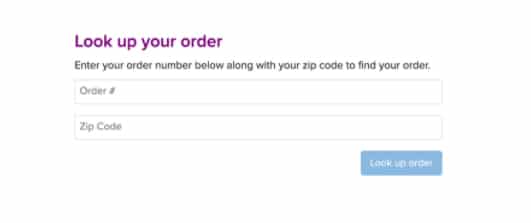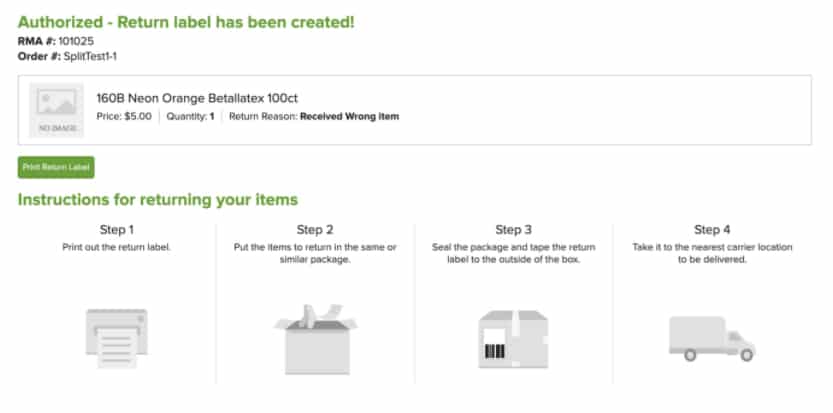ShipStation is a fulfillment and shipping software that helps businesses manage orders, compare rates, and ship packages. It integrates with a large number of shopping carts, marketplaces, carrier accounts, and other ecommerce tools, and can be used on a browser or mobile app.
The software provides discounted United States Postal Service (USPS), UPS, and DHL rates. Other services include inventory management and automation capabilities.
In our evaluation of the best shipping software for small businesses, ShipStation came in fourth place with a score of 3.96 out of 5. It delivers robust features and excellent usability on its higher-tier plans—making it a better choice for mid- to high-volume shippers than small-scale sellers and startups.
When to Use ShipStation
ShipStation works to streamline in-house ecommerce order fulfillment by integrating with other tools, managing orders, comparing rates, and handling the details of shipping. It features paid plans that suit a wide range of order volumes, but its upper-level plans for high-volume shippers offer a better value. The platform’s robust returns management tools provide a worthwhile advantage for businesses that sell products with high return rates, such as clothing or shoes.
When to Use an Alternative
ShipStation doesn’t offer a free starter plan and its lowest-level plan is somewhat limited. Because of this, we recommend an alternative for startups, small-scale sellers, and those seeking a free solution. It also lacks dedicated functionality for dropshipping, and it isn’t the best tool for managing crowdfunding campaigns.
ShipStation is slightly more expensive than other shipping solutions, but its lower-volume plans come with competitive pricing as well as discounted shipping rates from a number of popular carriers.
However, unlike nearly all of its competitors, ShipStation doesn’t offer a free starter plan. This inhibits accessibility for startups and low-volume operations and makes it harder for other businesses to test the platform before subscribing. However, a 30-day free trial is available for all paid plans.
Since our last update:
ShipStation increased the price of all plans from Silver through Enterprise by $10–$70. Additionally, the monthly shipment limit on these plans was reduced by 500–2,500.
Plans | Pricing ($/Month) | Monthly Shipments | Users |
|---|---|---|---|
Free Trial | 30 Days | ||
Starter | $9.99 | 50 | 1 |
Bronze | $29.99 | 500 | 1 |
Silver | $59.99 | 1,000 | 2 |
Gold | $99.99 | 2,000 | 3 |
Platinum | $149.99 | 5,000 | 5 |
Enterprise | $229.99 | 7,500 | 10 |
High-Volume | Custom quoted | Unlimited | 15 |
There’s no contract required to use ShipStation, so you can cancel or switch plans at any time.
All accounts have an unlimited store/sales channel allowance, and additional users can be added á la carte for $5 per month.
ShipStation promises to charge no additional fees outside of the subscription cost—except in the case of premium integrations, which includes Amazon Seller Fulfilled Prime.
Plan Restrictions
The main differences between each ShipStation plan are the number of monthly shipments, user account allowance, customer support accessibility, and branding options. Starter plan users can only contact customer support through email or a community forum—slightly better than ShippingEasy’s limited starter plan. Bronze, Silver, and Gold members have access to live chat, but phone support is only available to Platinum and Enterprise customers.
Another restriction on the software’s low-level plans is access to customized labels and packing slips. Starter and Bronze plan subscribers can apply their own branding to these deliverables in the form of a single logo, but Silver plan users and above have access to more comprehensive customization.
ShipStation largely meets our functionality criteria, offering batch support, hardware connectivity, and unlimited sales channels. It’s lacking in automation capabilities compared to Ordoro and ShippingEasy, but allows for some rule-based automation. Its analytics and customer support also need improvement.
Check out some of ShipStation’s functionalities:
Reporting
We found ShipStation’s analytics features to be robust, but its customization options are less intuitive than those of ShippingEasy.
ShipStation’s analytics feature can generate the following:
- Insights pages: Create visualization dashboards for your account overview, sales trends, product highlights, business operations, engagement, and customer overview.
- Insights reports: Access 20 preformatted reports for orders, shipments, accounting, products, inventory, hotkey and barcode actions, and raw data exports.
- Custom order and shipment reports: Build custom reports by adding only the fields you wish to export.
- Static reports: Create reports from periodic shipment or fulfillment data uploaded to ShipStation.
- Data archives: ShipStation compiles a monthly archive for your account’s orders, shipments, and shipment items.
Peripheral Hardware
Like ShippingEasy, ShipStation has its own proprietary app for connecting peripheral devices.
ShipStation Connect is a downloaded application that serves as a bridge between your ShipStation account and the following devices:
- Thermal printers
- Laser printers
- HID-compliant USB scales
- Barcode scanners
The app is accessible from mobile devices and can be used in conjunction with automation rules.
Customer Support
ShipStation’s support staff is available Monday through Friday from 8 a.m. to 8 p.m. Central time.
Phone support is only available to top-tier Enterprise plan users, and chat support is available with Bronze plans and higher. Service from these contact methods is highly rated by users, but email and forum responses are much less satisfactory.
Starter plan users are limited to receiving support through forum and email communication only. The ShipStation website states, “Email response times may exceed one business day,” and online reviews claim that this service is very poor.
Starter-level subscribers describe ShipStation’s customer service as being difficult, robotic, and impossible to reach an actual human being.
Online Resources
To aid new users in conquering its learning curve, ShipStation has a supply of online resources available:
- Integrations help guide
- Workflow guide library
- Troubleshooting guide
- Mobile help guide
- Frequently asked questions (FAQs)
- Community forum
- YouTube tutorials
- Webinar collection
Integrations
ShipStation offers more pre-built integrations than any other shipping software on the market, which comes in handy for midsize or expanding companies.
Here’s a complete list of ShipStation’s current direct integrations (note that some integrations are considered premium and will incur a charge):
- 3dcart
- AbleCommerce
- AmeriCommerce
- Big Cartel
- BigCommerce
- CoreCommerce
- CS-Cart
- Ecwid
- EKM
- FoxyCart
- Handshake
- InkSoft
- Magento
- MikoShop
- Miva
- New Oxatis
- OpenCart
- PrestaShop
- Salesforce Commerce Cloud
- Shopify
- Shopify Plus
- Shopit
- Shopping Cart Elite
- Shop-Ware
- ShopWired
- Sophio
- Squarespace
- UltraCart
- Volusion
- Weebly
- Wix
- WooCommerce
- X-Cart
- Yahoo
- Zen Cart
- Zoey
- Alibaba
- Amazon
- Amazon Australia
- Amazon Canada
- Amazon UK
- Bandcamp
- Best Buy Canada
- Bonanza
- Cdiscount
- Cratejoy
- eBay
- eBay Australia
- eBay Canada
- eBay UK
- Etsy
- Groopdealz
- Groupon Goods
- Houzz
- Jane.com
- Jet.com
- Mercado Libre
- Newegg
- Not On The High Street
- OnBuy
- Rakuten (Buy.com)
- Reverb
- Sears
- Shop Premium Outlets
- SimplePart
- Storenvy
- Tophatter
- Walmart
- Walmart Canada
- Wish
- Brightpearl
- ChannelAdvisor
- Cin7
- ecomdash
- GeekSeller
- Liftoff Ecommerce
- Linnworks
- QuickBooks Commerce
- SkuVault
- SureDone
- TradeGecko
- ChannelAdvisor
- ChannelSale
- Feedonomics
- GeekSeller
- Listing Mirror
- MoreCommerce
- Revolution Parts
- Sellbrite
- SellerActive
- SureDon
- AmmoReady
- Amplifier
- Celery
- Complemar
- eCom Logistics
- Evobox
- Fulfillment By Amazon (FBA)
- IFS360
- JD.com
- Kiddly
- MintFulfill
- Noram Partners
- Ruby Has
- SalesFlex
- Shiparoo
- ShipBob
- ShipCalm
- ShipDazzle
- ShippingTree
- ShipRelay
- Ship-Right Solutions
- ShipZOOM
- Synergy Diverse Solutions
- Synergy Logistics
- The ConneXtion
- The Douglas Stewart Company
- Vector
- Warehouse-Pro
- AccountingSuite
- Acumatica
- Avalara
- Brightpearl
- CeleriTech
- Codeless Platforms
- Connex for QuickBooks Desktop
- EBCFO
- My Office Apps
- NetSuite
- QuickBooks
- Quickfire Digital
- SAP Business ByDesign
- SAP Business One
- VATGlobal
- Webgility
- Altis
- Amosoft
- Arka
- BackerKit
- Codisto
- DS Smith ePack
- eBridge Connections
- Ecomdash
- eDesk
- Feedvisor
- FlowLink
- Gorgias
- Infocon Systems
- Kabbage
- Klaviyo
- Liftoff
- Linnworks
- Logicbroker
- Mailchimp
- noissue
- Optiseller
- PayPal
- Pixc
- Printful
- Re:amaze
- Rewind
- Salesforce AppExchange
- Salesforce Essentials
- Seller Accountant
- Sezzle
- ShipperHQ
- Shipsurance
- Shopgate
- Snapchat
- Spark Shipping
- SPS Commerce
- Stitch Labs
- StreetPricer
- Stripe Relay
- VL OMNI
- WooCurve
- Zapier
- Zendesk
ShipStation readily integrates with 145 agencies and solutions providers. View the full list.
ShipStation’s core features include order management, providing standard features such as batch processing, comma-separated values (CSV) entry, customizable grouping, split/combine functions, and more.
It also comes with inventory management capabilities, such as catalog support, stock allocation, inventory alerts, and syncing, as well as the ability to customize labels, packing slips, outbound emails, and tracking pages.
ShipStation’s primary features are robust enough to function well without secondary tools, earning it points. Additional points were gained for outbound email capabilities, international shipping, and order upload options. However, it lost points for lacking advanced marketing tools and dedicated dropshipping features.
ShipStation’s standout features include:
Rate Comparison Tool
ShipStation’s shipping calculator also functions as a rate-shopping tool by comparing a wide variety of shipping options.
The tool is well-developed and intuitive and allows users to toggle between different carriers and methods for each parcel. All rates displayed are up-to-date and accurate—meaning that the rate you choose is exactly what you’ll be charged. If available, delivery estimates will also be shown.
The software will only display rates from carriers you’ve integrated and connected to your account. But, as explained above, ShipStation integrates with more carriers than any other shipping solution available.
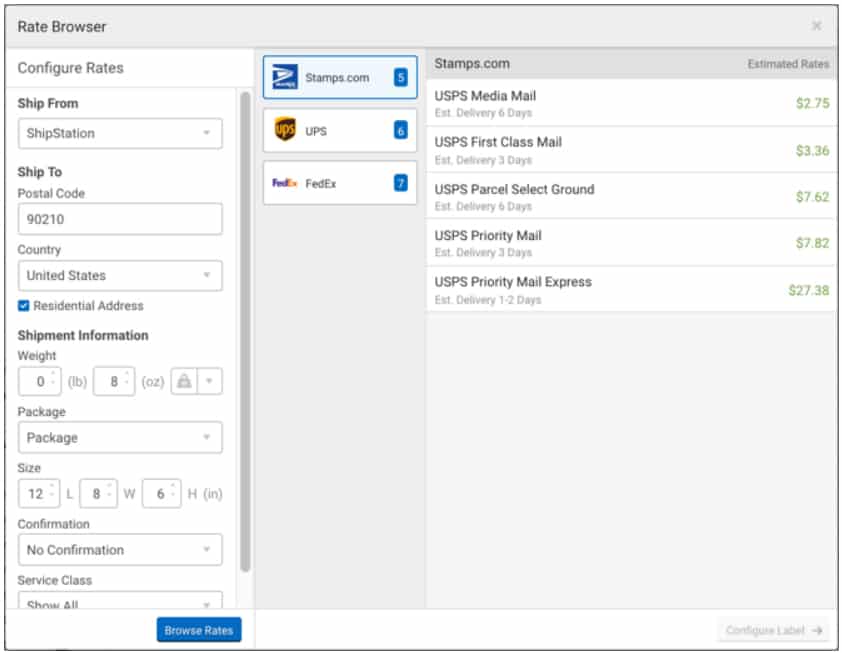
An example of shipping rate comparison using ShipStation’s calculator tool (Source: ShipStation)
Returns Management
ShipStation’s advanced returns management features create a significant edge over other shipping solutions.
Its main offering is a branded returns portal, which saves time by allowing your customers to perform self-service returns on your site. Click through the images below to see how the element works:
ShipStation allows users to generate return labels through USPS, UPS, FedEx, and DHL ecommerce. The action can be automated—so that customers can complete a return without having to contact you—or done on-demand.
ShipStation supports scan-based labels (also known as POUR labels), so you can provide customers with convenient shipping without the risk of paying for unused labels.
Automation
Like all of our top picks for shipping software, ShipStation allows you to save time and labor by automating various tasks.
Automations work by programming “if-then” rules into the software. For example, a rule could dictate if an order is placed within a certain region and then select a specified carrier and delivery method for the parcel. For every order meeting the criteria, ShipStation will purchase and print the shipping label automatically.
ShipStation offers three types of automation, which can be used on their own or in conjunction with each other:
- Product automation: Selected actions, such as insurance purchasing or inventory syncing, are triggered automatically when specified products are imported, edited, or ordered.
- Automation rules: Selected actions, such as outbound email sending or return label creation, are triggered automatically based on criteria set by you.
- Service mappings: When a customer chooses a shipping option at checkout, such as standard or expedited delivery, their preference is mapped to the actual service you want to use to ship an order to their region.
Mobile App
ShipStation is one of the only shipping software providers that offer on-the-go use from a mobile app.
Users report that the platform is easier to manage on a computer screen, but ShipStation Mobile allows you to quickly check inventory levels, manage orders, and make shipments from your phone.
The app also delivers push notifications for urgent events, such as low inventory alerts, and functions as a barcode scanner.
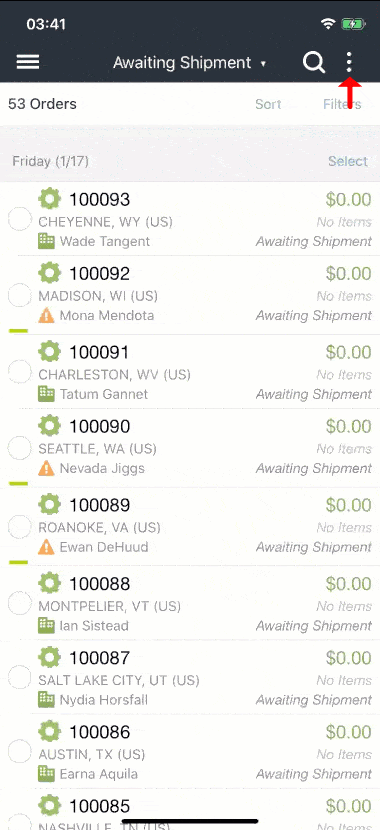
ShipStation’s mobile app retrieving an order from a scanned barcode (Source: ShipStation)
Customization
The software interface allows a number of customization options to meet each user’s workflow needs. This feature is especially helpful for ecommerce beginners or users migrating from different software.
Once configured, multiple customization presets can be saved to your account and accessed at any time.
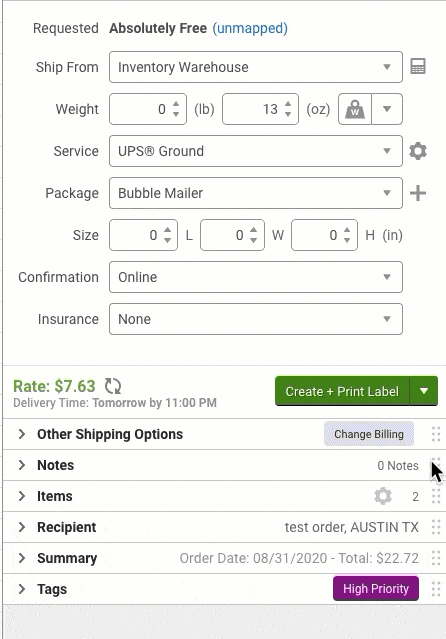
ShipStation’s sidebar can be toggled to match your shipping workflow. (Source: ShipStation)
These elements of the web app can be customized:
- Grid columns: These elements can be rearranged to configure custom Orders, Shipments, Products, and Customers dashboards
- Shipping sidebar sections: The sections in your shipping sidebar, such as Items, Notes, Recipient, and Summary, can be rearranged into any sequence you prefer
- Hotkeys: Assign shipping presets to hotkeys of your choosing
- Time, date, and measurement options: Users can change the format for time and date as well as switch between imperial or metric units
Additionally, ShipStation will soon allow users to change the user interface language from English to French or Spanish.
ShipStation is easy to use—as long as you’re on a high-tier subscription plan. This caveat brought the provider’s score down in our Ease of Use category.
We awarded points for its customizable user interface and device connectivity, which make the platform practical and accessible to all subscribers. But the customer service limitations on the Starter plan create substantial difficulty.
Here are the factors that play into ShipStation’s ease of use:
- Customer support hours: ShipStation’s support staff is available Monday through Friday from 8 a.m. to 8 p.m. Central time.
- Customer support accessibility: Support is available via phone for top-tier plans and via live chat for Bronze plans or higher. All other users may contact support via email or online forum. ShipStation’s responsiveness to emails is very poorly rated.
- User management options: For subscribers with multiple user accounts, ShipStation allows granular customization of user permissions. Primary users can set permissions based on order type or function.
- User interface quality: ShipStation’s desktop platform features a user-friendly interface with a customizable layout and is highly rated in reviews.
- Site speed and reliability: Users report that ShipStation is occasionally slow and experiences somewhat frequent glitches, especially when connecting other apps or hardware.
Ultimately, we like ShipStation’s wide range of robust features, but struggle with its popularity, ease of use, and overall value, which earned the provider a moderate score in this category.
ShipStation offers a solid platform with useful features, including a standout returns management tool that benefits business owners and the customer experience. However, it has significant negative feedback, mainly from low-level plan users, affecting its ease of use and overall value. We recommend alternatives like ShippingEasy for startups and small sellers unless you’re considering a high-level plan.
What Users Say in ShipStation Reviews
ShipStation’s ratings are mixed across app stores and software review sites. It receives a high net score on sites like Capterra and G2, but its ratings have been steadily dropping over the past year. It’s very poorly rated on other review sites like Trustpilot.
Favorable reviews mention ShipStation’s functional interface and plentiful integrations. Reviewers frequently cite using the software to ship 200-plus orders per day—making it clear that ShipStation is highly effective for midsize companies.
A large number of reviews state that the platform is great “when it actually works” and support isn’t needed. Customer service is a consistent pain point across neutral and negative reviews from starter-level subscribers. Users also state that the web app is glitchy and slow with frequent bugs, and technical support is of no help.
Other negative reviews describe the platform as a “nightmare” for accountants. These users report missing functionality from certain key accounting integrations, such as the ability to work freely with order data points and enable automations.
- Capterra: 4.6/5 from 850-plus reviews
- Shopify App Store: 3.6/5 from some 670 reviews
- G2: 4.3/5 from 370-plus reviews
- Trustpilot: 1.8/5 from about 190 reviews
| Users Like | Users Don't Like |
|---|---|
| Intuitive interface | Poor customer service |
| Good value | Highly ineffective tech support |
| Plentiful native integrations | Frequent technical issues |
| Powerful features | Accounting difficulties |
Methodology: How We Evaluated ShipStation
To evaluate ShipStation and other shipping software, we used a 28-point assessment that measures how well it meets small business order fulfillment and shipping needs. We researched the provider through third-party reviews, user ratings, relevant articles, and the company’s own content. Then, we personally assessed ShipStation’s platform.
We look for high-performing functions, an intuitive interface, effective customer support, and additional features that go beyond the scope of shipping.
To find the best tool for small businesses, we prioritized economical pricing and factors that contribute to overall ease of use. Our ecommerce experts also weighed in with their assessments of each provider.
Click through the tabs below for our full evaluation criteria:
20% of Overall Score
This criterion evaluates the availability of a free starter plan and the variety of paid options. Contenders were scored based on plan pricing, features at each tier, and carrier discounts. Points were deducted for limited functionality in lower-level plans.
ShipStation lacks a free plan and its paid options are less flexible than competitors, affecting its category score. However, it gained points for its large range of paid plans, decent pricing and good carrier discounts, earning a 4.38 out of 5 score.
20% of Overall Score
We assessed key features that boost efficiency and accessibility for businesses, such as batch capabilities, label printing, and hardware compatibility. Evaluation also covered prebuilt integrations, API access, sales channel allowances, and automation.
ShipStation scored well for its extensive prebuilt integrations and hardware compatibility. However, it has less developed automation features compared to competitors, which lowered its score to 4.06 out of 5.
20% of Overall Score
We evaluated standard features like reporting, returns management, and email notifications, focusing on their effectiveness. Points were also given for functionalities beyond shipping, such as dropshipping and inventory management.
ShipStation scored well for its robust standard features but lost points for less advanced order and inventory management tools. Its lack of dedicated dropshipping tools also impacted the score, leading to a final rating of 4.73 out of 5.
20% of Overall Score
We assessed each company’s UI for intuitiveness, uptime, site speed, and learning curve. We also considered the range of learning resources and placed strong emphasis on customer service accessibility, including support hours and quality.
ShipStation impressed with its user-friendly interface and abundant free online resources, boosting its score. However, it lost significant points for limited customer support on low-tier plans and glitchy web app, resulting in a 3.5 out of 5 overall score.
20% of Overall Score
This score combined our ecommerce experts’ final evaluations of value, ease of use, and stand-out features with scores from real-world users. We combed through thousands of ShipStation reviews to identify consistent pain points and high-performing features of each tool.
We awarded points for ShipStation’s impressive features, but its iffy popularity and poor ease of use brought down its score. We also deducted points for its overall value, which is compromised by the restrictions set on low-tier plans. In the end, ShipStation achieved an Expert Score of 3.13 out of 5.
ShipStation Frequently Asked Questions (FAQs)
Like most shipping software, ShipStation earns volume discounts for the business it brings to popular carriers, such as USPS and UPS. The provider then passes these discounts to its customers, allowing users to pay significantly lower rates than they would if they were to buy labels on their own. This makes shipping cheaper when using ShipStation.
It’s possible to perform in-house fulfillment without the help of shipping software like ShipStation. It’s done by managing orders through your ecommerce platform or another connected app and periodically going to the post office to buy shipping labels.
While this approach saves on the cost of ShipStation’s subscription fee, it typically takes more time and labor, and makes basic organization more difficult. Thanks to its discounted shipping rates, ShipStation usually enables businesses to save more money than it costs them during any given month—making it a worthwhile investment. You can also try it free for 30 days to test out its fit for your businesses.
ShipStation offers six different plans with monthly prices ranging from $9.99/month to $249.99/month. Unlike other shipping software companies, it does not offer a free plan.
ShipStation gets mixed reviews from users. There are a lot of negative 1-star reviews, with users complaining about bad customer service and glitchy software. Many other reviews are highly positive, with users stating that it helped them save a significant amount of money on shipping.
Bottom Line
Shipping software is a necessity for ecommerce businesses, especially those performing fulfillment in-house.
ShipStation is a powerful tool for managing shipments, orders, and inventory, but it’s a better choice for mid- to high-volume shippers than small-scale sellers and startups.
For sellers with low sales volume, we recommend ShippingEasy. But if you’re shipping at least 500 or more orders per month, ShipStation’s Bronze plan (or higher) is a worthy investment.


